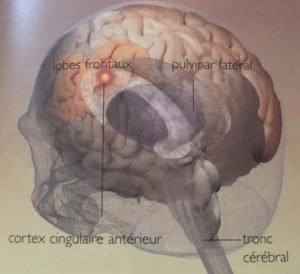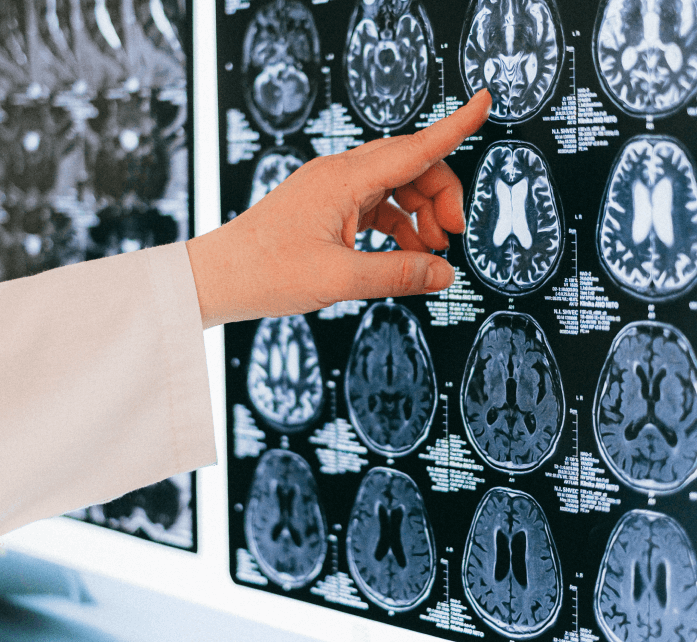Learning Disability
The physiology of learning:
- Input – Input information is through our excitatory senses mediated by glutamic acid.
- Storage – We store our memories in the cortex and the hippocampus-mediated by dopamine.
- Output – Output is by recalling our memories via the hippocampus-mediated by acetylcholine.
Processing information within the retina and the brain tissue needs good omega oils like DHA and GLA.
Learning difficulties must, therefore, be due to cranial fault or any nerve interferences to block communication nerve flow, and insufficient sensory stimulation or insufficient glutamate synthesis. Or/and insufficient dendritic connection or insufficient dopamine synthesis. Or/and insufficient cortical/hippocampal connections or insufficient acetylcholine synthesis.
Eye tracking fault is linked to spheno-maxillary cranial nerve interference and category ii pelvis nerve interference. Learning is a process that can be stopped, slowed, or sped up. All that is necessary to speed up learning is stimulation to 5 senses of vision, hearing, smell, taste and touch with increasing frequency, intensity and duration. Avoiding allergens, toxicity and parasites infections.
Brain gym exercise is needed, perseverance and all emotional blockages adjusted.
Brain Chemistry

Brain chemicals/neurotransmitters functional biochemistry test
1. Dopamine. Sex drive, mood, alertness, movement symptoms:
Deficiency: indecision, poor concentration, irrational behaviour, psychological reversal, a world without pleasure, clumsiness, photophobia, depression/manic depression, loss of smell, tremor, rigidity, pains.
Excess: nightmares, psychoses, schizophrenia, anxiety, aggression, confusion.
2. Serotonin. The gin tonic of the brain.
Deficiency: mood disturbances, depression, suicidal, sleep disorders, obsessive behaviour like anorexia nervosa, bulimia, weight gain, decreased libido, impulsive aggression, alcoholism, sexual deviance, explosive rage, low blood pressure, low body temperature, bladder problems.
Excess: migraine, depression, anxiety, pains, anorexia, masked aggression, obsessive compulsion, fearfulness, shyness, lack of self-confidence, low sex drive, hypertension, high body temperature, kidney problems, need for more water.
3. Histamine. It’s associated with arousal, alertness, sexuality, motor activity, water metabolism, control of blood pressure.
Deficiency: depression-lack of arousal, loss of libido, oedema, low immune function, stomach problems (nausea).
Excess: excess arousal, allergy, asthma, pain, redness, itching, oedema, spleen overactive.
4. Inhibitory Neurotransmitters. (gaba, glycine, taurine).
- Gaba
Deficiency: anxiety, convulsions, tetany, decreased cerebellar reflexes, lateral inhibition of the retina.
Excess: muscle relaxation, stuttering, lung problems.
- Glycine
Deficiency: anxiety, symptoms of glutamate excess, motor neurone spacticity.
Excess: laid back, stuttering, snoring, lungs problems. - Taurine
Deficiency: anxiety, hypercholesterolemia, muscular dystrophies, photoreceptor degeneration, retinitis pigmentosa, toxicity, large intestine problems.
Excess: laid back, stuttering, lung problems.
5. Excitatory neurotransmitters. (aspartic acid, glutamic acid).
Deficiency: lack of excitation, learning disorders, weight gain, loss of libido, memory loss, hypothyroidism.
Excess: overexcitation, high libido, hyperactivity, ADHD, dyslexia, amnesia, muscle spasm, restless legs, nystagmus, tinnitus, irritable syndrome, fibromyalgia, Huntington chorea, motor neurone disease, hyperthyroidism.









